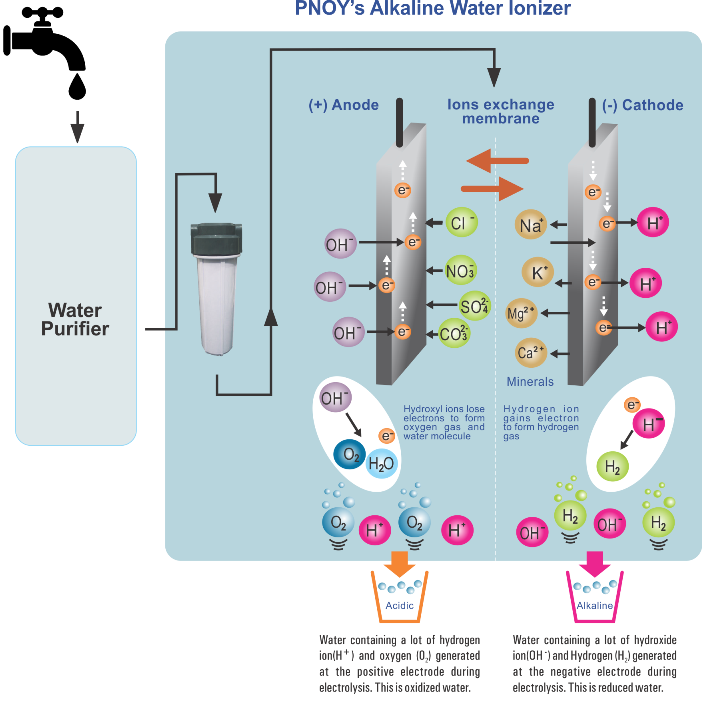How is Alkaline Ionized Water Generated?
The quality of water we drink determines the quality of our health. To keep us healthy, our bodies
maintain just the right internal conditions such as the concentration of electrolytes, body
temperature, and pH. Our body contains a lot of water—around 60% of an adult's body weight is body
fluid. The water we drink is absorbed by the intestine and circulated throughout the body in the
form of body fluid such as blood. A total of about 7200L of blood per day circulates around the
body, carrying oxygen, carbon dioxide, nutrients, and metabolic waste. Blood also eliminates
bacteria and other foreign materials from our body, so it plays a very important role in keeping us
alive. Body fluid contains electrolytes that have a vital role. If electrolyte levels are too low or
too high, cell and organ functions will decline, which could lead to life-threatening conditions.
These electrolytes include Sodium (Na), Potassium (K), Calcium (Ca), Magnesium (Mg), and Chlorides,
and they are absorbed by the water we drink, which maintains the function of muscles and nerve
cells. Therefore, an adequate supply of clean and mineral-rich high-quality drinking water is the
key to a healthy body.


